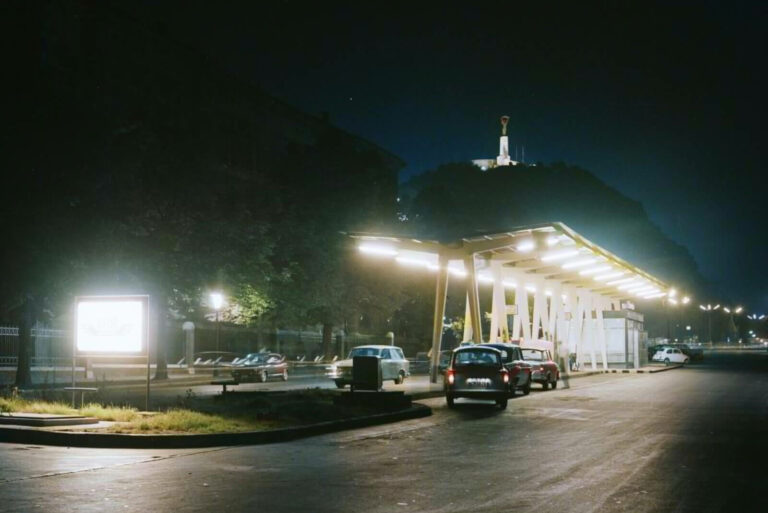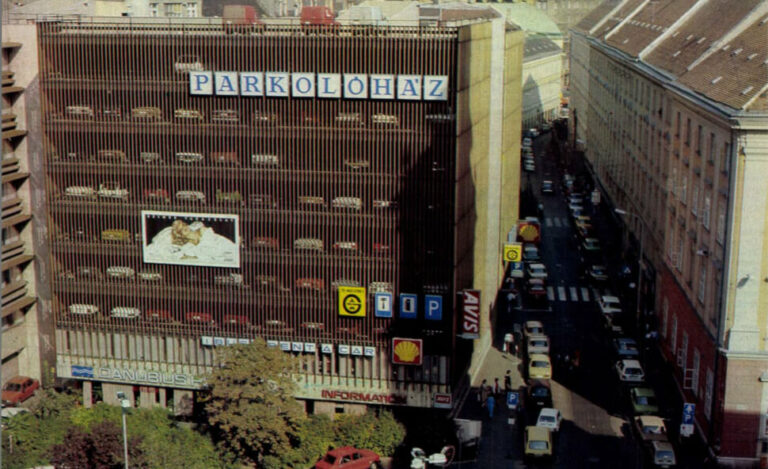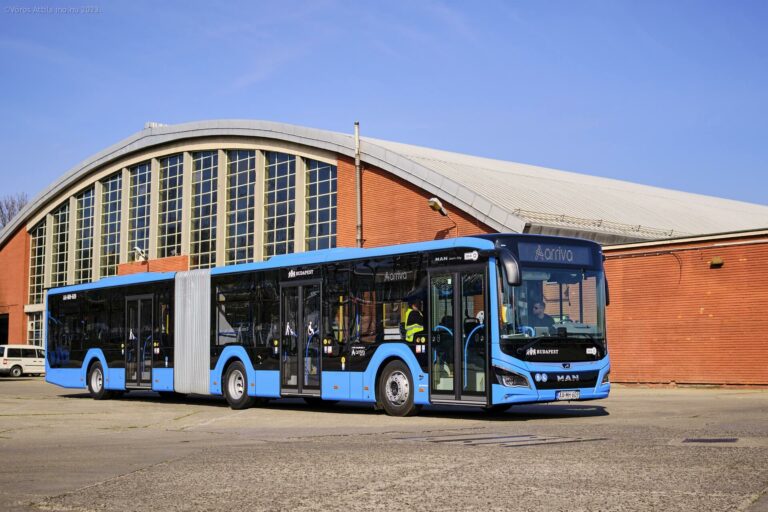1956 - The Budapest Wholesale Market Square
The capital's former pantry
"Fresh produce is getting to the shops much faster than ever before Wholesale Fairgroundswith the introduction of conveyorized fast loading." - proclaims the 1956 July 1. on the Car Enginethe caption at the bottom of the image published in the. But what was and where was - in its ruins to this day - the Budapest Wholesale Market?
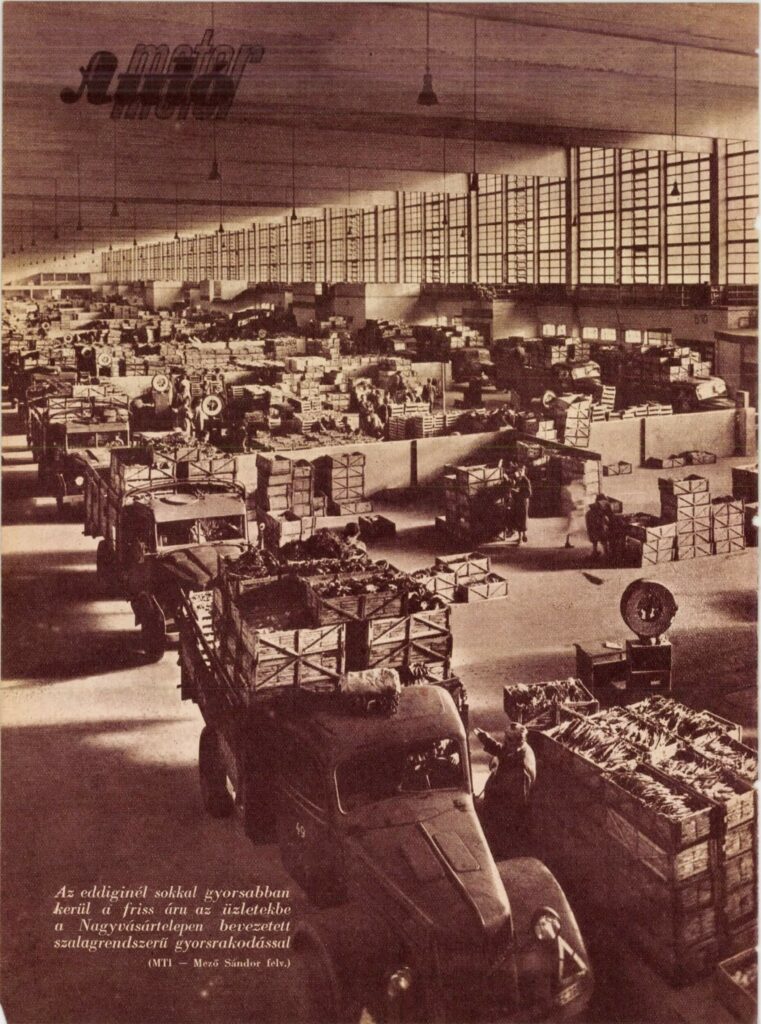
By the turn of the 19th and 20th centuries, Budapest, which had developed into a truly cosmopolitan city, had just over 700,000 permanent residents and by 1930 this number had risen to over a million. In Greater Budapest, as we know it today, the same number was close to one and a half million.
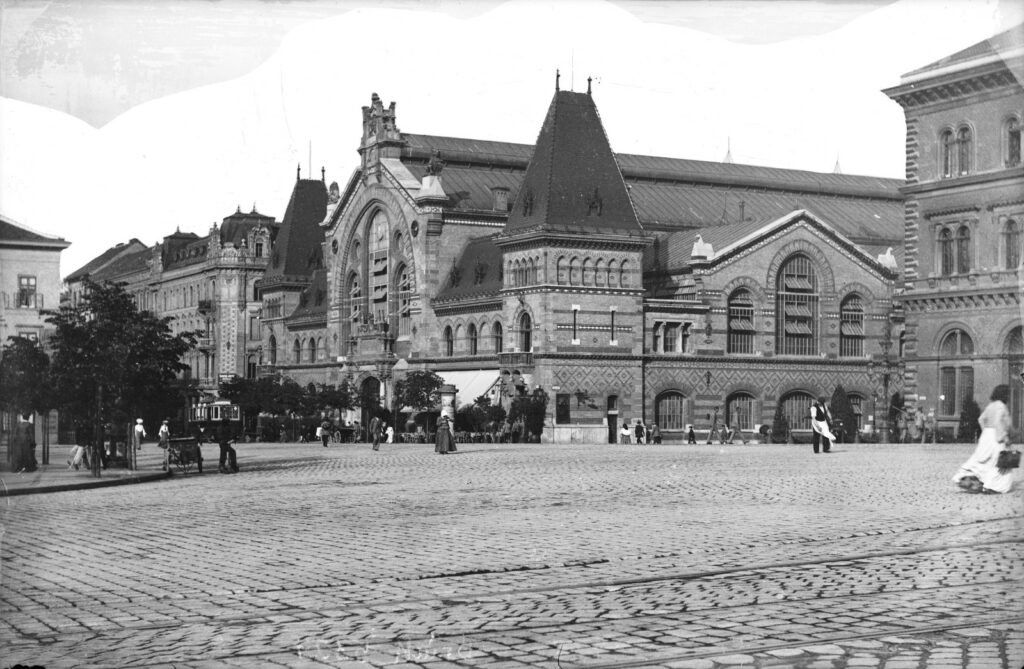
Hungary, 1904, Budapest V., Budapest IX. Fővám tér, opposite the Central Market Hall. Image source.
Designed by Samu Pecz and inaugurated in 1897, the Central Market Hall - the still existing, justly famous building on Vámház körút - and its surroundings were originally designed to accommodate wholesalers in the part of the building facing the Danube, where goods were stored not only through the tunnel connecting the river to the hall, but also through the railway tracks built inside the building. The sale of raw materials from abroad or from other parts of the country was initially carried out here, but within a few years it became clear that Pecz's beautiful creation was primarily suitable for supplying the local population, but could not serve the wholesale trade. The new system of halls in the capital at that time only temporarily alleviated the situation, and although efforts were made to move street vendors to the new, modern, covered sales areas, even this was not feasible in the area around the Great Hall: traffic at the foot of the Ferenc József Bridge was almost completely paralysed by the traffic of street vendors.

Hungary, 1917, Budapest IX Fővám Square, market in front of the Fővám Palace (later Corvinus University) at the quay Image source: Fortepan 256179 / National Széchényi Library / János Müllner
By the early 1900s, wholesale trading was finally discontinued in the halls, and the related activities were temporarily carried on in public warehouses.
However, the final solution to the situation had to wait for almost 30 years: in the late 1920s, the city government managed to decide on the location of the new wholesale market, which was to be built near the large slaughterhouses, the Danube freight station and the river.
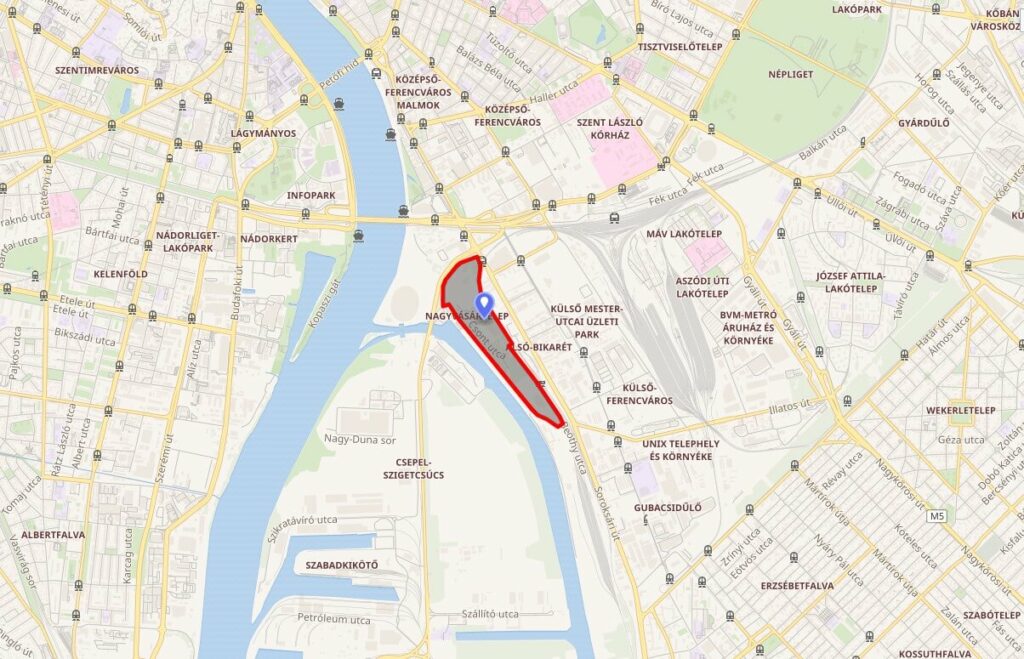
In November 1932, in the presence of the Governor, the Great Fairgrounds were inaugurated, built on the land between the mouth of the Ráckevei Danube and Soroksári Road. The goods arriving by rail were awaited in a station with a capacity of 210 wagons, and an iron-framed loading bay was built above the tracks. Goods arriving by wagon could be unloaded on a ramp, but wagons could also enter the main hall building itself. The main branch of the Danube was used for receiving goods in the so-called "hall harbour", and a separate dereglyok harbour was established in the Soroksár (Ráckeve) branch of the Danube.
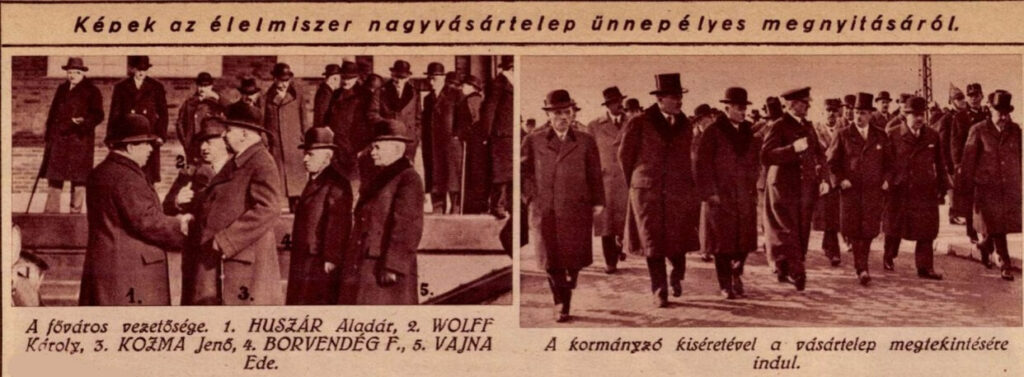
Source: arcanum / Magyarság November 1932
The two most prominent buildings of the fairground were the huge reinforced concrete hall and the brick building that housed the management (the remains of which can still be seen today). The fairground, with a floor area of around 10,000 square metres, 234 metres long, 42 metres wide and 17 metres high, was the work of Aladár Münnich. The building was divided into several sections due to its great length. Each continuous section is 35 metres long and is separated by a 4 metre long alley. The canopy, which was one of the most modern elements of the hall's construction, allowed for a continuous flow of goods. Inside the building, the traders had access to carefully designed compartments or booths to prevent the various foodstuffs and raw materials from getting mixed up.
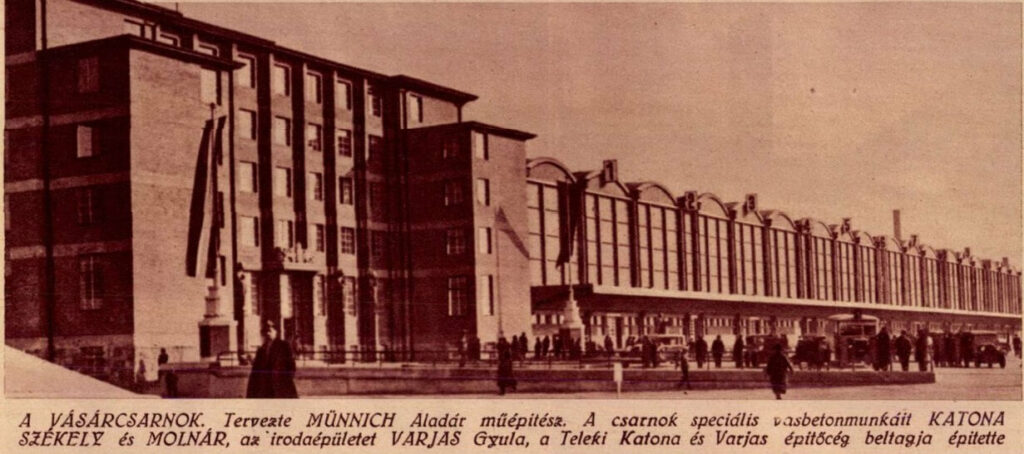
Source: arcanum / Magyarság November 1932
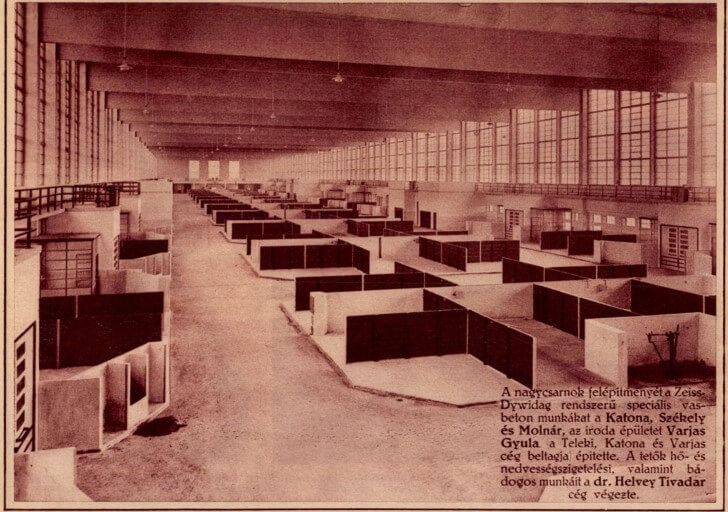
Source: arcanum / Magyarság November 1932
The four-storey office building also housed a restaurant, a post office, a bank branch, a customs office, a hall supervisor's office and offices for the wholesalers and trustees who worked there.
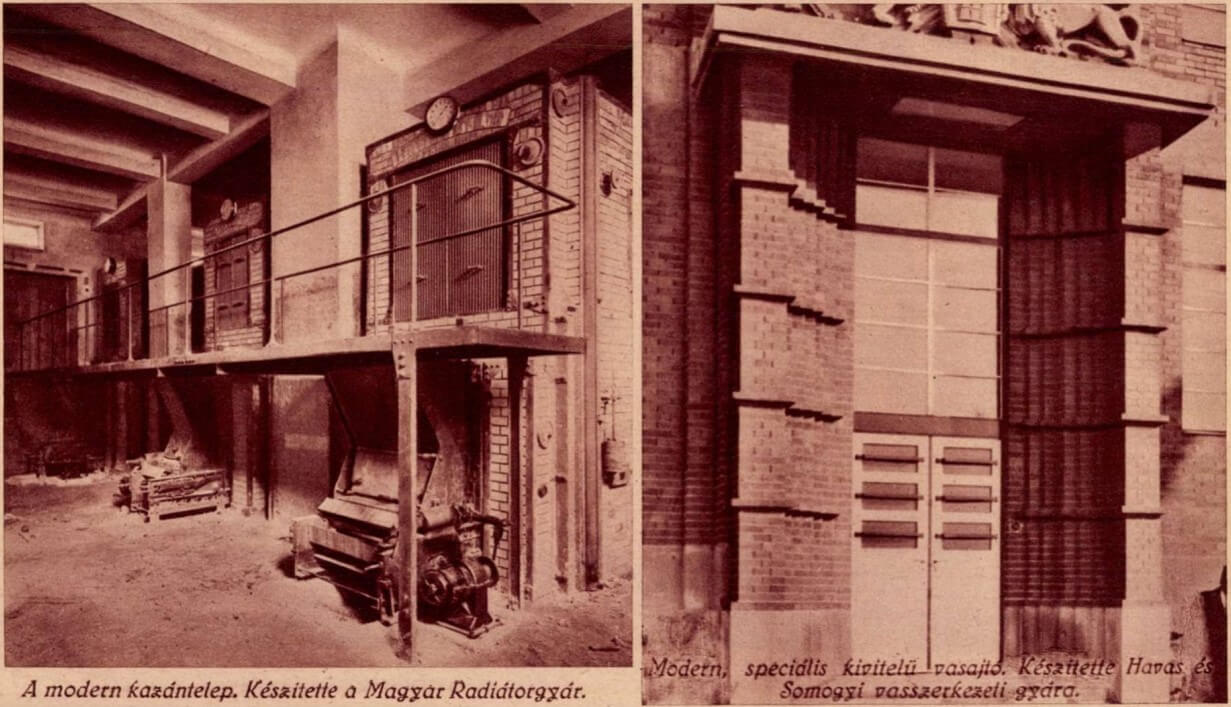
Source: arcanum / Magyarság November 1932
At the same time as the opening of the wholesale market, the wholesale traders, most of whom were horse-drawn carts, were banned from the halls and markets of the capital, which was more than justified from a public health and urban planning point of view, but the measure significantly increased prices.
During the Second World War, the hall was severely damaged and only the structure of the rail loading hall remained. Soon after the reconstruction, it was taken over by the state and used by agricultural and commercial companies until the change of regime (the Budapest Sales Company of Agricultural Cooperatives, the Agricultural Products Loading Service and Processing Cooperative, and from 1963, among many other companies, the Vegetable and Fruit Marketing Cooperative, or ZÖLDÉRT).
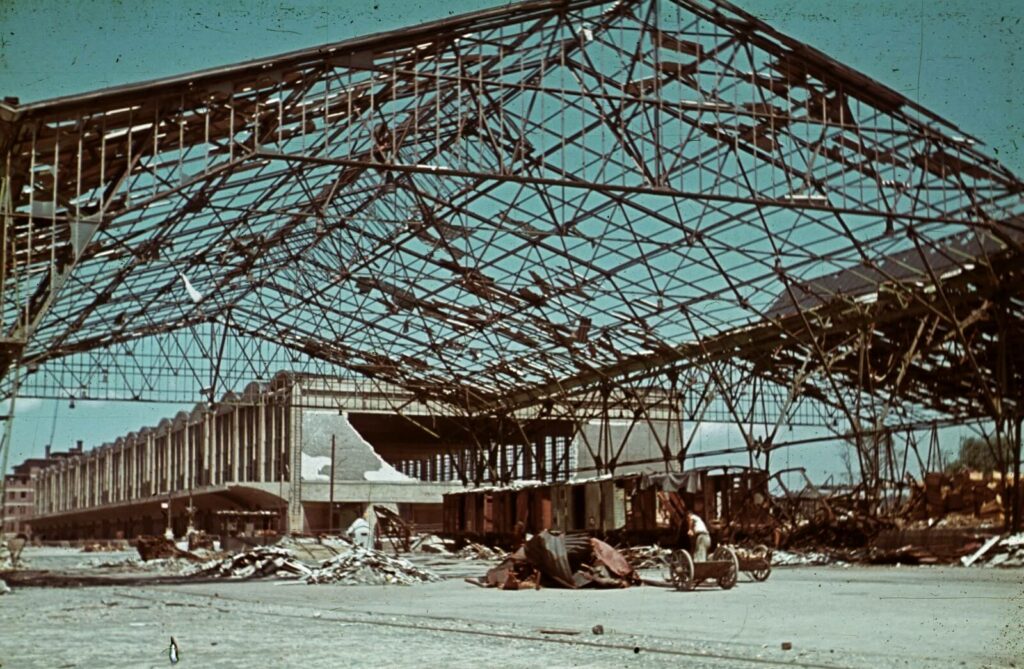
Hungary, 1944, Budapest IX. Nagyvásártelep after the war destruction Image source: Fortepan 96575 / Schermann Ákos / Trompler Elek
Despite the devastation of the war, life soon started to pick up at the plant, and in addition to the vulnerable truck fleet, BESZKÁRT also helped with transport and logistics tasks: it used specially adapted trams to transport goods from the countryside to the city's supply points. In the autumn of 1947, the newsreels reported that the two thousandth wagonload of potatoes from Savoy had arrived at the Great Fairgrounds, but to illustrate the proportions, it is worth mentioning that in 1947, for example, six tonnes of spring onions alone arrived daily from the Sinatelep State Farm in the season. It is true that the post-war shortages continued to haunt us for a long time: railway wagons arriving at night and early in the morning were regularly ransacked. In a raid in August 1947, for example, a hundred people were arrested for this and faced a minimum of internment or severe imprisonment.
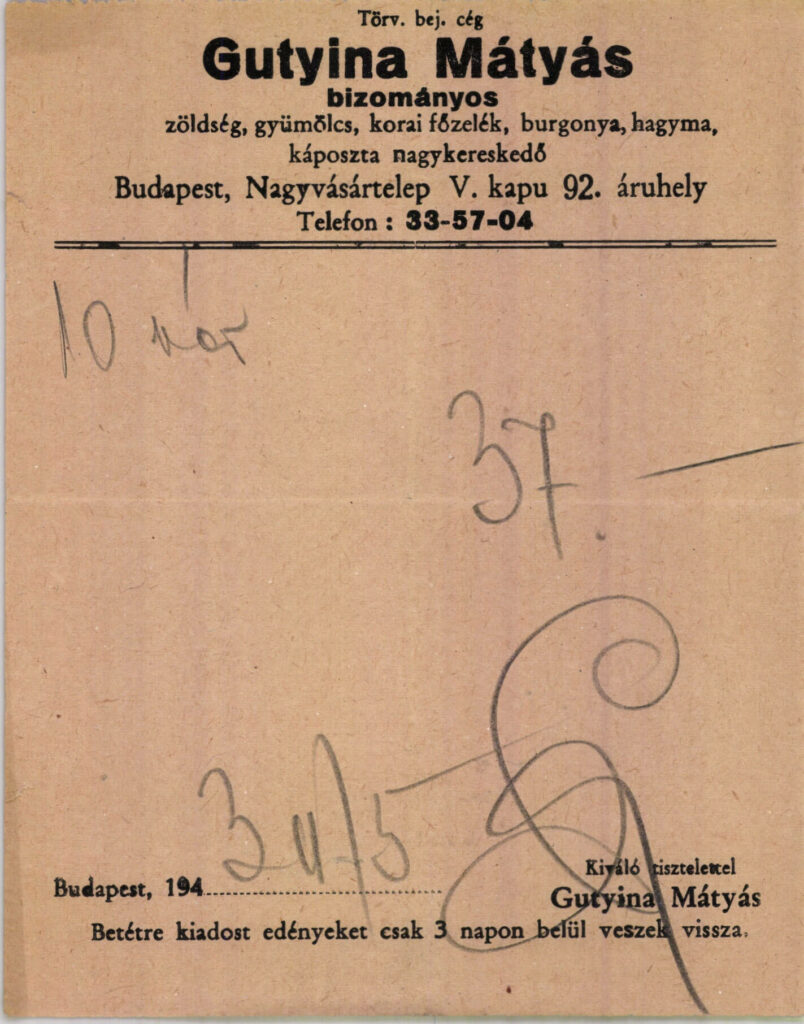
Image source: the Museum of Agriculture and Hospitality
Of course, the supply was not uninterrupted later on, but that was not the fault of the colony. There were always some goods that could not be supplied according to demand, but only according to distribution.
The heyday of the Nagyvásártelep was in the sixties and seventies, although it is perhaps an exaggeration to talk about the heyday when even the director could only switch on the electricity at night peak if the guard supervising the plant allowed him to do so (in 1960, for example, the plant was licensed for a total consumption of 60 kW, while the actual demand was around 200 kW). There was also a recurring problem of the cleanliness and pollution of the plant. With the huge flow of goods, the 1200(!) workers simply did not have the capacity to keep the roads and warehouses properly clean, and even when they asked for state (council) help - e.g. a watering trolley - they were refused on the grounds that the fairground was not a public road. This was compounded by the fact that heating and sanitation facilities were scarce at the time.
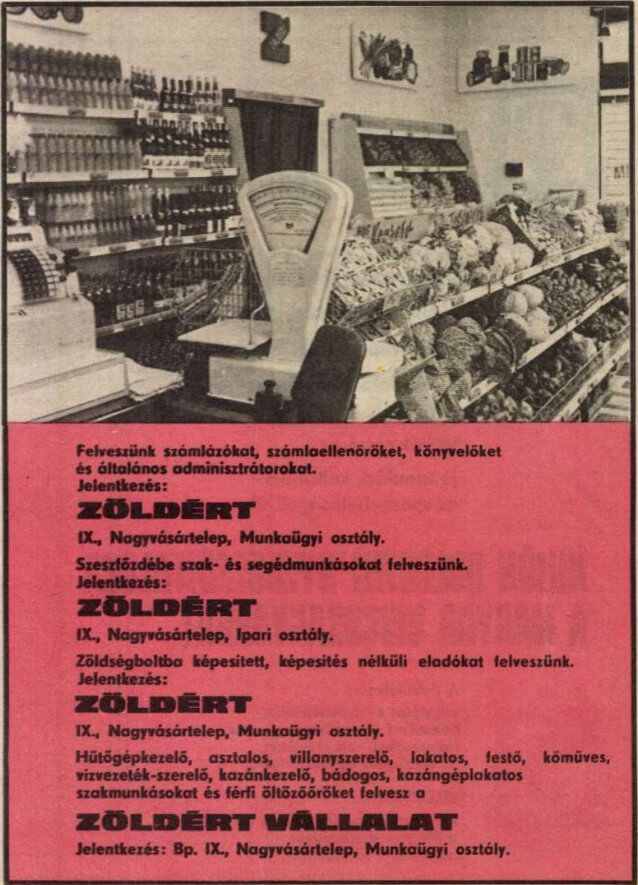
Job advertisement from 1973 in the Hungarian Youth. Source: arcanum
The first major refurbishment had to wait until 1966, when - in two phases until the mid-1970s - new cold storage facilities were built, machinery was significantly increased and the rail and road networks were adapted to the needs.
Even at the end of the seventies, just before the decline of the plant, around 400-450 trucks were still delivering goods in several rounds around the city at peak times, with an additional 120 Zuk trucks supplying the Greenert shops.
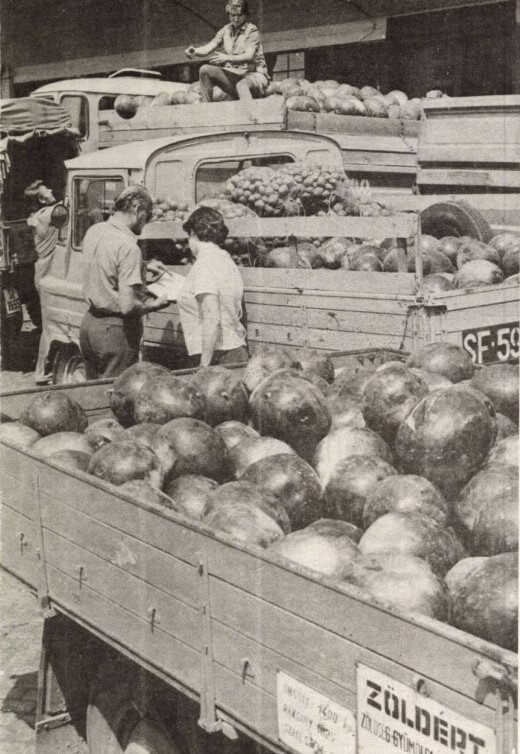
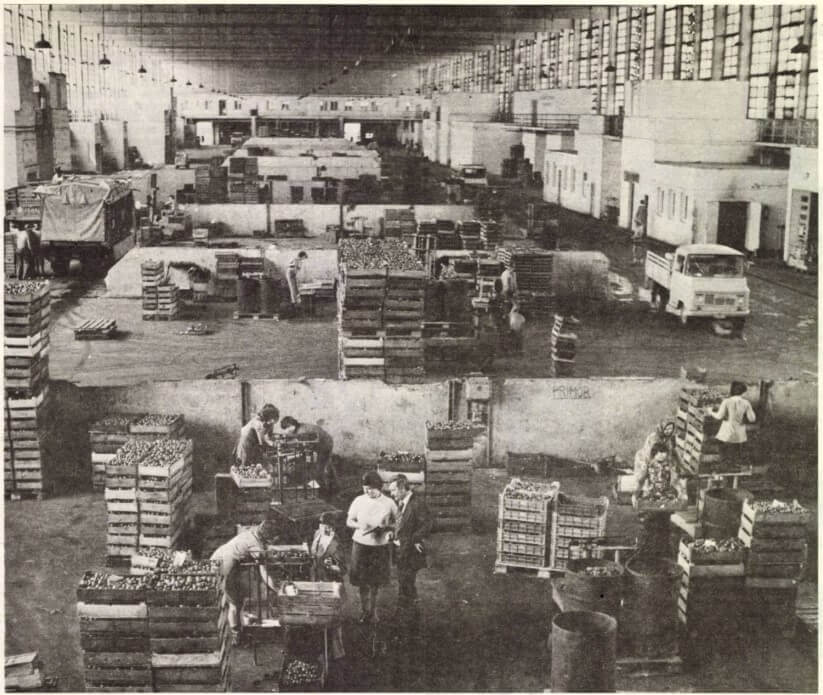
1979 - Image source: arcanum / Hungarian Police
The Nagyvásártelep - under relatively cultivated conditions - fulfilled its function perfectly until the 1970s. Then its turnover started to decline - and the market, which in its heyday could handle up to 1500 tons of fruit and vegetables a day, had not even reached a tenth of that by the mid-1980s: its function and role was almost completely taken over by the wholesale market on Bosnyák Square, but the conditions there were not nearly as favourable as those in the purpose-built wholesale market.
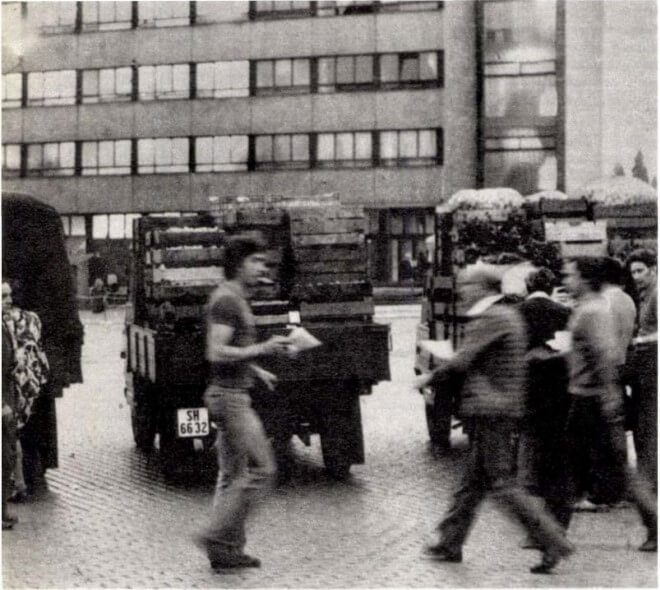
1980 - image source: arcanum / Budapest folyóirat
After the change of regime, the facility completely lost its original function and ceased to exist. Its facilities were demolished, with the exception of the large hall and the adjacent office building. The latter have been listed since 2004. The fallow land has since been covered by scrub forest. The site is now derelict.
Source: wikipedia, pestbuda.hu (Ambrus Gönczi) , arcanum
